In summary, from our research and site visits,
Dutchess Junction brickmakers and brands included:
FROM OUR COLLECTION:
(Unless otherwise noted, all bricks were found
at or near the location of the original yards, now Hudson
Highlands State Park.)
Aldridge Brick Co.

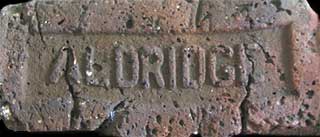
"Daniel Aldridge resided in Mudhole, NY (which is
now known as Roseton, NY). Daniel is thought to have moved to
Newburgh, NY, sometime between 1810 and 1817, due to the fact
that his wife was from there. One of his sons was Thomas
Aldridge born in 1818 and died August, 1892. Thomas bought a
farm near Fishkill Landing, NY in the fall of 1853 which later
became the 'ABC' (Aldridge Brothers & Company) Brickyard in
Dutchess Junction, NY."
(SOURCE: Steven Blair Aldridge
Family Home Page)
"In the business affairs of New York State, where he became one of the leading figures in the brick industry, Aaron Ennis Aldridge for many years took an important part. His was a place of outstanding character in commercial circles, and he was dearly loved by his fellowmen in widely varying walks of life. For his personal qualities, as well as for his achievements, he was recognized as an individual of great ability, for his traits of mind and heart were such as to win for him the very high regard of all who knew him. Integrity, soundness and accuracy of judgment, kindliness in attitude and deed, depth of sympathy and understanding, breadth of vision, life in accordance with the loftiest principles of human behavior-these were among the chief characteristics of Mr. Aldridge, whose career was of worth and whose life was finely lived.
Mr. Aldridge was born on January 19, 1851, in Balmville, near Newburgh, New York. His father, Thomas Aldridge, was a brickmaker, who lived most of his life and died in Chelsea, having bought up farms at Dutchess Junction to form a brickyard. This enterprise became very successful; and the father's success naturally led the son into similar undertakings.
Aaron E. Aldridge wanted, in boyhood, to become a lawyer, but when his mother died, he was only ten years old, and his father did not care to have him leave home, preferring him to be with his sisters. So he went to work for his father, at Dutchess Junction; and then, when the elder Mr. Aldridge removed to Chelsea, the boy remained in charge of the Dutchess Junction business. For many years one of the leading figures in the brick industry, Aaron E. Aldridge was president of the Thomas Aldridge Brick and Land Company, and he also served as vice-president of the Greater New York Brick Company. He was prominent as a manufacturer, and still more so as a selling agent in New York City, where he had offices in the Times Square Building. From that center, he handled the output of many yards along the river. He was recognized throughout the country as an authority on brick making and the brick market. Up and down the Hudson, wherever bricks were made, he was known and honored, not only for his aptitude and integrity in business, but for his excellent personal qualities that endeared him to all who knew him. His own brickyard was one of the largest along the river, and a model for all others.
Along with his business affairs, Mr. Aldridge took an active interest in civic life. For many years he was trustee of the old village of Fishkill Landing, and won admiration far and wide by his broad vision and courage in seeking village improvements and suggesting methods of municipal betterment while he was a member of the board. He was also one of the oldest members of the Trinity Methodist Episcopal Church, where he was a constant attendant as long as his health permitted. For many years he served as a member of the official board; nor did he take a keener interest in any of his many activities than in the church and its work. Though inactive in his later years, he will long be remembered as one of the most capable brick manufacturers and traders of New York State. He was a public-spirited citizen, too, one whose personal traits won respect and esteem in every circle of society. He died in 1925 in Beacon, NY."
(SOURCE: Sullivan, James,
History of New York State, 1523-1927, [Vol. 6]
1873-1931.)
W.D. Budd Brick Co.
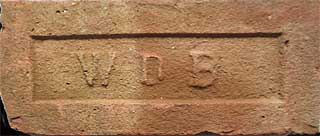

found at the West
Point Foundry, Cold Spring, NY
Nathaniel and Alonzo Covert, Covert Bros.

Gormley and Son
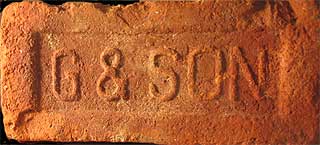
William K. Hammond


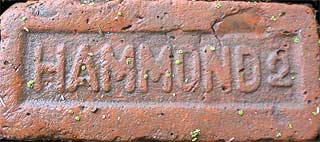
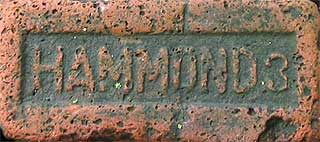
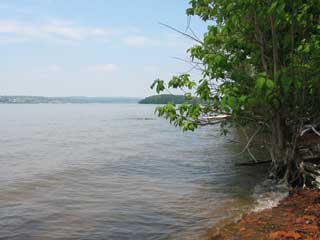
The Hammond site today
Hammond and Freeman
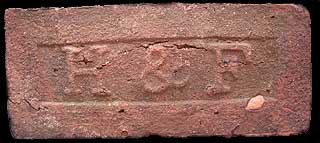
Special to The New York Times. August 31, 1902, Sunday:
BRICK TRUST DISOLVES
John C. McNamara

From Fred Rieck: "John C. McNamara is listed in
the 1901 Breed Publishing Co. Directory of the NY Central and
H.R.R.R. In another directory, of 1905 vintage, there is an entry
of The Anchor Brick Co., also of Dutchess Jnct. along with those
of John C. McNamra and Nathaniel Covert as being associated with
that firm (evidently) located at the Covert Brothers yard."
Webmaster Note: We received an email from Joe McNamara telling us that his grandfather, Francis J. McNamara and his father before him, John C. McNamara, worked for Barnes, McNamara and Morrissey. Joe explains, "They were business agents for DPBW and Kingston brick yards, managing the various aspects of the business like transportation on the Hudson River. John C McNamara, my fatherís grandfather, married Mary Ann Timoney, Francis Timoneyís daughter. Iím told that my grandfather Francis J McNamara was actually born in the Dutchess Manor House."
In The Great Hudson River Brick Industry, George
Hutton wrote about the "commission men:"
"The Greater New York Brick Company was not the result of
cooperative effort among the manufacturers, but a hybrid
organization resulting from the initiative of a handful of New
York brick brokers--the commission men. William Barnes, John
McNamara, and Richard Morrissey were prominent names among
the early twentieth-century commission men.
Barnes was originally in the brick business at
Grassy Point (the XXX brand) with the Farleys. A son of the
latter family, James, became a nominee, for the U.S. presidency
and then served as postmaster general during Franklin Roosevelt's
administration. Jim Farley then became president of General
Builders, a large materials dealer in the city that also
purchased the Dennings Point
plant (opposite Newburgh) in 1946. Farley was famed for his
legendary ability to unfailingly associate an enormous number of
peoples' names with their face priding himself on instant recall.
The Morrisseys were also in the brick business on the Minisceongo
Creek (at Grassy Point).
Barnes, McNamara, and Morrissey, by World War I,
became a principal brick brokerage firm in the city and remained
in business into the middle of the century, with the Hutton
Company as a significant account. By the middle or the first
decade of the century, the commission men were already working
closely with the manufacturers, at times furnishing financing as
well. Many of those brokers were themselves originally from
Haverstraw and Grassy Point and on good personal terms with many
of the brickmakers. Nevertheless, the objective was to produce
the largest number of brick at the lowest cost. That was the
market imposed condition for the manufacture of common bricks for
the New York City market--and the negative effects of this
inexorable pressure on the industry's profits and consequently
upon investment in new technology, plant and equipment, wages,
and working conditions cannot be overemphasized. By 1911, most of
the manufacturers were forced to recognize the advantages of
being under the corporate wing of the Greater New York."
Nicholson Brothers

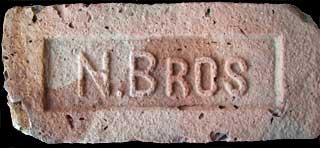
Pierre A. Northrip

Francis Timoney

At the age of 23 Francis Timoney came to the US
where he worked at the SM Dykeman brickyard in Verplanck,
Westchester County NY. After 3 years he had been foreman for 2
years, and began to work for shares. Two years later he purchased
half interest in the company. Four years later he bought the
second half. Here is an 1891 map of Verplanck by F. W. Biers
showing the land owned by "F. Timony" (sic). In 1886 he purchased
the Dutchess Junction properties. There was one yard in
working order, eventually there were three (1/4 of million bricks
per day!). He owned 2 barges that brought the materials up and
down the Hudson River.8
In the 1900 Census for Fishkill, Dutchess, NY,
Francis Timoney is listed as:
"Head of household, age 69, married 44 yrs, immigrated 1852, in
US 48 yrs, naturalized, brick manufacturer, owns farm, free of
mortgage, 40 acres."
He was born in 1829 or 1830 and died in 1902.
In addition to the brickyards, Timoney built and
owned the Dutchess Manor
House. He also built a Roman Catholic Church for his workers
in Dutchess Junction (nicknamed Timoneyville) and named it after
his patron saint (St Francis). Timoney was the Third Francis in
his line and there have been many more since.2
On July 14, 1897 two of the three Timoney
brickyards were all destroyed by a dam breaking. "The brick-making plant, wagons,
carts &c., were swept across the railroad track into the river.
At the northern yard were sixty arches of 'green' brick, 45,000
in each arch. The water softened these and let the whole down in
a mass of clay. A twelve-arch kiln was burning. The flood put out
the fire and practically ruined the brick. Mr Timoney will be
unable to resume operations in the two yards this year. The yards
had a capacity of 24,000,000 bricks a year and Mr. Timoney's loss
is $25,000. The adjoining brick yard of Hammond & Freeman was
damaged to the extent of $5000.1"
The Timoneys were not able to fully recover.
Eventually, they sold the Manor House and it is now a catering
facility. The church closed but eventually re-opened as a nursing
home.
From Fred Rieck: "The brand was "F.T." for
Francis Timoney, or his son Frank. Francis owned the yard first
(and a grocery) and Frank became the listed manufacturer after
1887. He remained listed as a manufacturer until 1905 when both
the Beacon City Directory and the 1905 NY State Quarry and Mining
Industry Report list his wife, Margaret Timoney, as a Dutchess
Junction brick manufacturer."